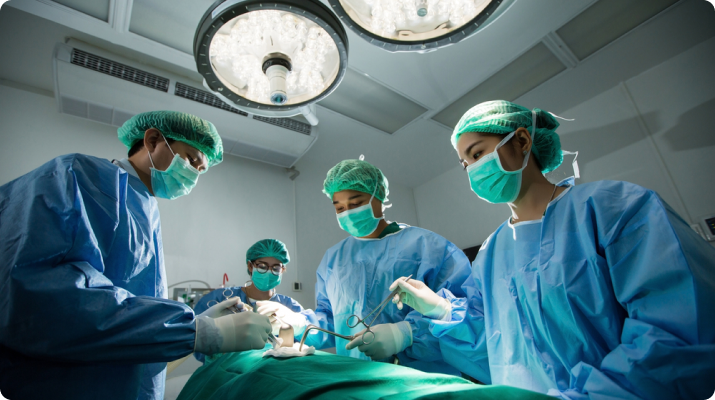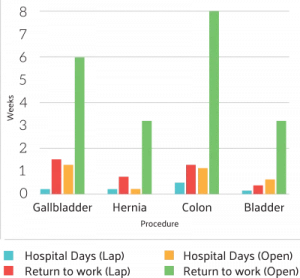- PERTH SURGICAL & BARIATRICS
-
08 65581901
A hernia can occur if there is a weakness in a part of the muscle layer that encloses and supports the abdominal organs, such as the bowel and stomach. A hernia can be identified as a lump that is felt under the skin at the site of the weakness in the muscle layer. Quite commonly the lump will appear when movement or straining causes the abdominal contents to be pushed through the area of weakness.

A hernia is more likely to occur with increased intra-abdominal pressure. This can be due to weightlifting in the gym or a job that involves heavy lifting, anyone who has a chronic cough or chronic constipation, pregnancy and obesity. Hernias can also run in families. Commonly, however, there is no apparent cause for the development of a hernia.
Most hernias will increase in size over time. The visible increase in size can be over a matter of weeks, months or years. As the size increases the hernia will tend to become more painful.
There is a small chance that intra-abdominal tissue (bowel or fatty tissue) can get stuck inside the hernia. If the blood supply to this tissue is then compromised, strangulation of the tissue can occur and the hernia will become very painful. In these cases, urgent medical attention is necessary and open operation would be required to repair the hernia and check on whether the trapped tissue is viable or needs to be removed. This situation is called a strangulated hernia.
Groin hernias can be repaired via either the traditional open operation or a laparoscopic keyhole approach.
The laparoscopic method of repairing a hernia requires much less cutting of the tissues. Therefore there is significantly less pain after the operation compared to an open groin hernia repair, and also a person will be much more likely to return to normal activities faster.
References: Prospective randomised controlled trial of laparoscopic versus open inguinal hernia repair: five year follow up. Wellwood JM et al. BMJ 2003. May 10; vol 326 (7397), 1012-3
Outcomes in patients who underwent both laparoscopic and open inguinal hernia repairs. Bernardotto M, Jenkinson A. ANZ J Surg. 2010 May;80(5):381-2

This chart compares the difference in recovery time and return to work between laparoscopic and open surgery. In addition to this, the traditional open hernia repair has been shown to have a fairly high risk of causing chronic groin numbness or chronic groin pain in the long term following surgery. This is because in open surgery the supporting mesh is placed in the proximity of the nerves of the groin, and therefore it is not uncommon for these nerves to be trapped as scar tissue develops around the mesh. In the laparoscopic approach the mesh is placed in a deeper layer of the muscle wall, which is away from these nerves.
The risks of complications following a laparoscopic hernia repair are very low. The most common risks are of bleeding or bruising around the three small abdominal wounds, or a discharge through the umbilical wound for a few days. The risk of recurrence of a hernia following laparoscopic or open hernia repair has been shown to be the same in the hands of experienced surgeons. In both the open and laparoscopic repair there is a very small chance of damage to organs or damage to the blood supply to the testicle. The risk of these complications is negligible in the hands of a very experienced surgeon.
Laparoscopic hernia repair is performed under general anaesthetic. There are three small cuts in the abdomen. A 10 mm cut within the umbilicus and two 5 mm cuts either side of the umbilicus at the same level. The hernia is visualised with a telescopic camera. It is reduced with specialised laparoscopic instruments and a mesh is placed over the weakness in the abdominal wall.
A patient can go home either on the same day of surgery or after an overnight stay.
Pain is much less following laparoscopic hernia repair compared to an open hernia repair. There will be a bruising sensation in the groin. This pain should be well controlled with the painkillers that you were prescribed on discharge from hospital. You may need to take painkillers for one or two weeks following the operation but should be able to return to work and light activities within a few days of surgery.
Following laparoscopic hernia surgery a person should be able to increase their activity levels within days of the operation. This would include longer and longer walks and more activity around the house. Introduction of aerobic activity in the gym would be encouraged one week after surgery. Lifting of heavy weights needs to be avoided for one month after surgery.
Reach out to us to book a consultation with Dr. Ravi Rao and learn about your various options for bariatric surgery.